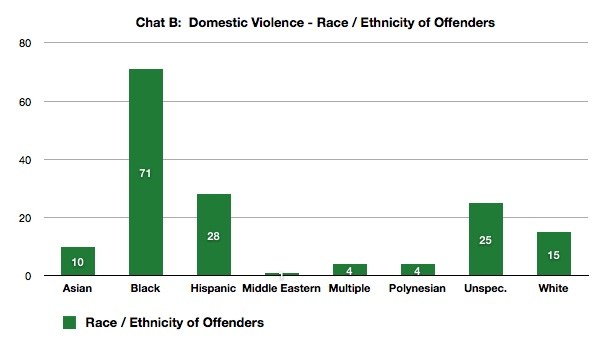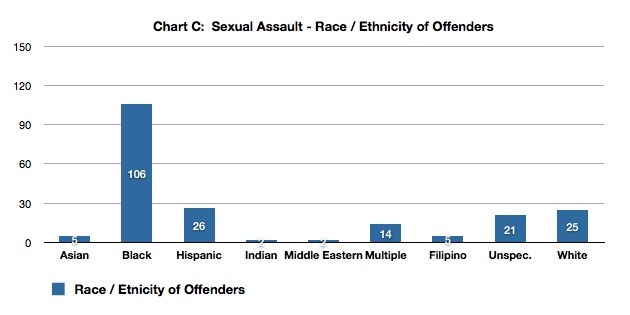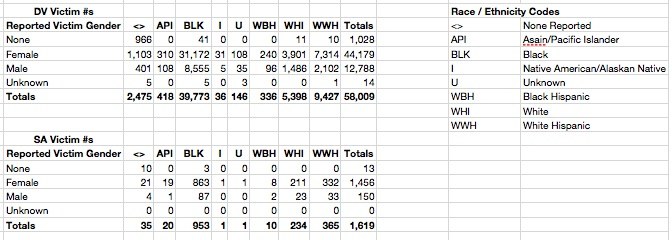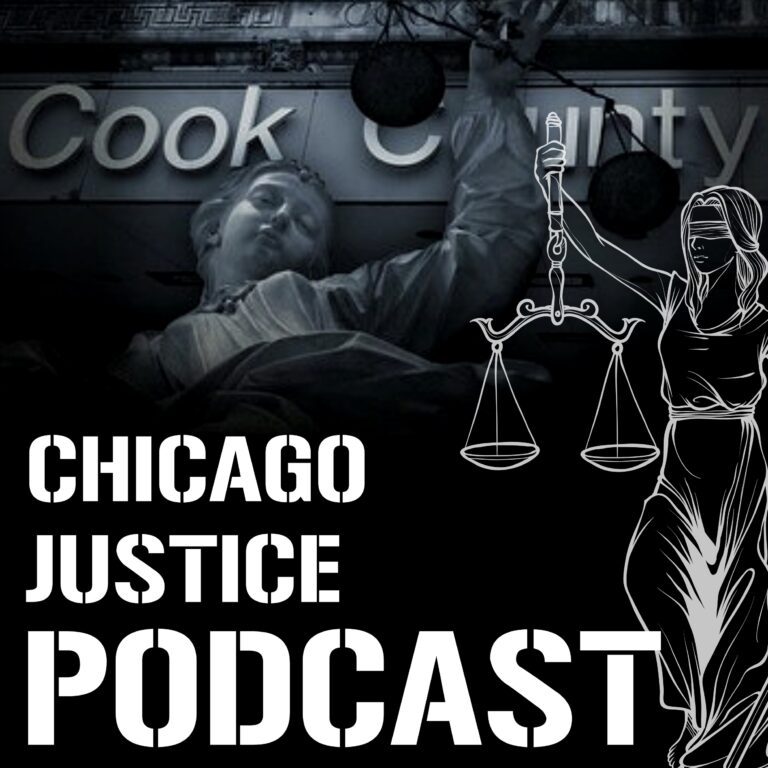We study a year of coverage of violence against women in the Chicago Tribune and Chicago Sun Times to understand how closely the coverage resembles how the crimes occur in Chicago’s communities.


Through our Community Listening Tour the Chicago Justice Project regularly engages with community members throughout Chicago and fields questions regarding the coverage of crime and violence in their neighborhoods. Many times, these questions focus on what community members feel is a disparity in coverage based on the race of the victim or offenders or in what community the crime occurred. We have also received feedback from our Community Advisory Board about what they believe to be a disparity between media coverage of violence against women and how those crimes occur in our city. This combination of complaints and feedback were the basis for CJP focusing our first annual report on analyzing media coverage of violence against women in Chicago.
This research project was conducted in partnership with The Chicago Metropolitan Battered Women’s Network and Rape Victim Advocates.
Collecting the Media Content
In May 2011 the first version of our Community Open Data Access Project (CODA) went live and started collecting published articles from the Chicago Tribune & Chicago Sun Times. Through a process called “scraping,” CODA collects coverage that appears on both papers’ websites. We confirmed with both papers that, during our study time of June 1, 2011 to May 31, 2012, both papers posted the articles that appeared in their respective print versions online as well. This enabled CJP to capture all of the content published by both the Chicago Tribune and Chicago Sun Times.
What RSS feeds did we capture to collect the content? Well, you can download our RSS document at the bottom of this report for a complete list of RSS feeds we captured from both the Chicago Tribune and Chicago Sun Times.
Coding the Content
The next step involved the creation of criteria that would guide our pool of volunteers as they reviewed the coverage and coded the content of the articles. These criteria included the following:
- Crime, violence, and victimization that occur in Chicago regardless of whether or not a Chicago resident is the victim or perpetrator
- Chicago residents who are the victims or perpetrators of crime regardless of whether it occurs in Chicago or across the nation
- Specific content about criminal justice agencies as specified in the media-coding chart. This includes any coverage of the criminal justice agencies (Office of Emergency Management & Communications, Chicago Police Department, Cook County State’s Attorney’s Office, Cook County Circuit Court, Cook County Jail, Cook County Sheriff’s Police, Illinois Department of Corrections, Chicago Police Board, Independent Police Review Authority) whatsoever, whether or not it is specifically crime related. This could include such topics as change in management or new policies being put into place.
Our original set of volunteers included about a dozen community members throughout Chicago’s neighborhoods. The volunteer pool was expanded to include paralegals from the law firms of Winston & Strawn and project assistants at Kirkland & Ellis. In total we have had over 50 volunteers that have participated in the coding. All of the original coding that has been completed has been verified by at least one if not more volunteers as the project has moved along. To date, our volunteers have provided close to 3,000 hours coding the content since September of 2011. The coding and validating continues to today as we have expanded since May of 2011 to now include an additional 19 media sources. Our next report will contain analysis of the reporting from many of these additional sources.
We also put together a chart with keywords associated with each of the topics. You can download a copy below.
A Year in Coverage: Domestic Violence and Sexual Assault in the Papers
We grouped the articles from both papers into a single data set and studied their contents as a single data set. In Chart A you will find the total number of articles from both the Chicago Tribune & Chicago Sun Times for the year we studied. Also, you will find the total number of unique incidents covered in those articles. As you will see there are incidents that receive repeated stories from both papers.


In Chart B we take a look at the race of the offenders in the domestic violence stories we captured. You will see that even taking in to account the “unspecified” category (in which no race was identifiable from the coverage), there is a significant disparity between the numbers of stories with black offenders when compared to the stories with white offenders.


In Chart C you can see similar demographic patterns when you take a look at the race of the offenders in the sexual assault stories that we captured.


Findings from offender race / ethnicity analysis in domestic violence incidents:
- Readers of the Chicago Tribune and Sun Times are almost 5 times more likely to read about a domestic violence incident involving a black offender rather than a white offender.
- Readers are also almost twice as likely to read about a domestic violence story if it involves a Hispanic offender then a white offender.
- Readers are 2.5 times more likely to read about a domestic violence incident involving a black offender than a Hispanic offender.
Findings from offender race / ethnicity analysis sexual assault incidents
- Readers are just over four times more likely to read about a sexual assault with a black offender rather than a white offender.
- The number of stories involving Hispanic and white offenders are basically equal.
- Readers are slightly over four times more likely to read about sexual assault incidents involving black offenders than Hispanic offenders.
We were unable to conduct an analysis based on the race of the survivor because the content of the articles did not contain that information on a consistent basis.
Over represented in the coverage?
In the 2010 census Chicago was almost evenly divided between blacks 32.9%, whites (non-Hispanic) 31.7%, and Hispanics 35.4%. Given the even distribution between these three categories, the disparity in coverage by the race and ethnicity of the offenders is noticeable. A superficial analysis would lead the reader to believe that our results clearly detail a racial bias in the coverage of the daily papers. While this might very well be true, we discuss further in this report a possible reason for this obvious disparity that may have less to do with an overt racial bias and more to do with another factor affecting coverage. Either way, it is clear that the output of the reporting when analyzed as a whole over the course of a year clearly details a disparity by race of the offender in domestic violence and sexual assault reporting at the Chicago Tribune and Sun Times.
Mapping the Coverage
Approximately 85% of the articles are mapped to a specific community where they occurred. The remaining articles are mapped to a general area of the city like “west side” or “south side” because that was all the information included in the reporting.
The maps are interactive. Please take the time to click on the markers to learn more about the incidents that were covered by the Chicago Tribune and Sun Times. Each marker represents an incident of domestic violence (on the first map) and sexual assault (on the second map). When clicking on a marker you will also get the urls to the stories about those incidents.
Domestic Violence
The map below details each of the domestic violence stories in the area of the city where they occurred. If you click around this map you will see that there is significant reinforcement of the disparity in coverage.
There is clearly an absence of reporting on domestic violence incidents that occur in white north side communities. If you start in the Loop – go directly west to Homan and then straight north to Roger’s Park you have approximately 3 stories that appear from that huge swath of the city. The remaining 155 domestic violence stories that did appear both online and in the papers are spread across the remaining parts of the city, minus the communities of Hyde Park, South Chicago, and South Deering that also had no incidents reported on from their community. This geospatial disparity in the incidents covered reinforces the race / ethnicity analysis that uncovered the disparity of stories by the race / ethnicity of the offender involved.
[googlemaps https://www.google.com/maps/d/embed?mid=1Zy-3LFJ2CVOVIZgE6zMep-qFZOE&w=640&h=480%5DSexual Assault
The geospatial analysis of the sexual assault reporting follows much of the same pattern found in the domestic violence stories. In this case – minus a handful of cases in Austin, Humboldt Park, East Garfield Park, & Gale Wood – you can go straight west from the Loop and north to Roger’s Park and see that there are only a handful of cases in this enormous swath of the city. There are indeed more reports on sexual assault in the north side communities than their specified portion of domestic violence stories, but even with these reports there is still an undeniable disparity geospatially.
[googlemaps https://www.google.com/maps/d/embed?mid=1KH7LDbK2PaCtxoJ4SmsU9N7uNQs&w=640&h=480%5DFrom where are victims seeking services
We believe it would be enlightening to take a close look at what zip codes in Chicago victims of these crimes are calling the domestic violence hotline and also seeking services from domestic violence and sexual assault agencies. The Domestic Violence Help Line is run by The Chicago Metropolitan Battered Women’s Network and the data for the hotline is maintained by the organization. Domestic violence & sexual assault client service data is provided by Chicago victim service providers and hosted by Illinois Criminal Justice Information Authority in their InfoNet database. Now, we know that sometimes there are significant gaps in time between when an individual is the victim of a domestic violence or sexual assault, or both, and when they seek services. Also, from where the survivor calls for services does not always correlate to where the assault happened, and occasionally the assault may actually occur out of state or out of the county. These maps are being offered to show the even distribution of calls to the helplines and from where people seek services across race, ethnic, and socio-economic boundaries in Chicago.
Red Heat Map – This map details where clients reside when they seek services from Chicago based domestic violence victim service providers. This shows only those that seek services from Chicago.
[googlemaps https://www.google.com/fusiontables/embedviz?viz=MAP&q=select+col2%3E%3E1+from+1D6Ukw_0QV7Zue-TsjT2Bcm9DONdmdw0hyzmqKQA&h=false&lat=41.86642164739932&lng=-87.8697979243164&z=11&t=1&l=col2%3E%3E1&y=2&tmplt=2&w=750&h=500%5DGray Heat Map – This is a map of where in the city that Chicago based survivors reside when calling the domestic violence hotline.
[googlemaps https://www.google.com/fusiontables/embedviz?viz=MAP&q=select+col2%3E%3E1+from+1B2RFY7AZIgXPy5-ZMWQvIbCTHjgCJep0oazuSrc&h=false&lat=41.848905619528985&lng=-87.6717006953125&z=11&t=1&l=col2%3E%3E1&y=2&tmplt=2&w=750&h=500%5DGreen Heat Map – This map details where clients reside when they seek services from Chicago based sexual assault victim service providers. This shows only those that seek services from Chicago.
[googlemaps https://www.google.com/fusiontables/embedviz?viz=MAP&q=select+col2%3E%3E1+from+1xwDmVfzlv9EauM2s9wC8m-VKBKDe5UO4utE0ucg&h=false&lat=41.85171873566773&lng=-87.68337366894531&z=11&t=1&l=col2%3E%3E1&y=2&tmplt=2&w=750&h=500%5DThe map of calls to the domestic violence hotline is far more evenly dispersed throughout the city than the reporting in the daily papers. The one noticeable disparity is that concentration of calls for services from the community Logan Square. If you take a look on the map of domestic violence reporting you will see that there is only 1 incident that was reported on from that community that was an extreme outlier to the routine domestic violence calls. This single incident involved a brother murdering one sister and wounding another
The west side communities of North Lawndale and Little village only see a single incident receiving media attention, yet you can see from the heat map of where people seek services of sexual assault agencies that there seems to be an increased level of calls from these communities when compared to the city as a whole. This disparity seems to be contrary to the race and ethnicity of the offender we covered earlier in this report. The single incident reported on from these communities was on the sentencing of a woman who ran a brothel and forced young girls in to prostitution. So while technically involving sexual assault, this incident does not really involve a recent assault of an individual in either of these communities.
How well does the reporting reflect reality?
In looking at the reporting on both crimes we can say that neither adequately reflects the way that the crimes most often occur in Chicago. Most notably, the reporting tends to cover either hyper-violent cases that include murders, near murders, or contain significant amounts of violence. When the stories do not reflect this level of violence they tend to be about one-off cases, like a woman throwing a cupcake at her husband and hitting him in the head in front of police officers. Neither the hyper-violent nor the one-off cases are how these crimes most often occur in the Chicago. This distinction is important because over-reporting on the extreme severity of these crimes will lead to a populace that is afraid of crimes that likely will not occur, and unequipped with the knowledge to deal with a situation far more likely to happen, such as intimate partner violence.
When you focus on the reporting on sexual assault, we know that nationwide social science research such as the National Crime Victimization Study has found consistently for decades that in approximately 80% of sexual assaults (rapes in most other states) the offender is someone known to the survivor and quite often an intimate partner. These crimes are called typically called acquaintance/partner rapes. The other 20% of these crimes are perpetrated by someone the survivor does not know; which are referred to as stranger rapes. Our analysis showed that 198 of the 207 stories about sexual assault were stories involving stranger rapes, or 96%, which stands in stark contrast to how these crimes occur in our communities. Of the remaining stories involving strangers 5 articles were on the same incident.
The domestic violence reporting tends to focus mainly on hyper-violent cases and strangely enough did not include one single case involving a white couple in an intimate relationship. When the Tribune or Sun-Times reports on domestic violence involving whites, the incidents usually involve a child or younger person attacking his parent or grandparent. While these crimes do occur and, like all domestic violence incidents are worthy of a response, they are outliers compared to how the crimes typically occur in our communities.
Criminal Justice Data vs. the Reporting
We have obtained victim gender & race data from the Chicago Police Department specific to the time period of our study. You will quickly notice the over representation of blacks and Hispanics in the domestic violence data. Also, you will find similar disparities in the sexual assault data.


In looking at the CPD data regarding domestic incidents (DI) and criminal sexual assault/abuse (CSA), we noticed that there were UCR codes of sex crimes in the domestic incidents data that were not reflected on the CSA data. We would have expected there to be overlap between the two, and therefore determined that the data request regarding sex crimes had not been comprehensive enough of all the possible sex crime charges.
Since we know that both domestic violence and sexual assault crimes cross all race and class boundaries, there must be an explanation for this disparity. We believe that the disparity found in the victim numbers has a contributing factors. First, the lack of community cohesion and resources available in the communities of color throughout Chicago leads to more females of color seeking solutions via the criminal justice system. Second, we believe that because women of color are more familiar e social service systems at higher rates than their white counterparts, they are more comfortable seeking police service when victimized. Neither of these answers is based on sound research so this is clearly an avenue that further social science research would be warranted.
One additional issue that needs to be addressed is the sheer number of cases that are detailed here. You will remember that the total number of articles involving domestic violence number 158. You can see that the Chicago Police Department data involves 58,009 victims. Also remember that not every victim makes a report to the police, so the actual number of victimizations should be considered to be significantly higher than the numbers detailed here.
On the sexual assault side there are 1619 victims detailed in the CPD data, of which 205 were covered by the Tribune and Sun-Times. We know that about 35%, or 3.5 out of every 10 victimizations for rape nationally are reported to the police, (Female Victims of Sexual Violence, 1994-2010, NCVS, 2013). This translates to there being 4,857 victimizations in Chicago annually.
Conclusion
Our analysis brings to the public discussion many evidence based questions regarding the coverage of violence against women from the Chicago Tribune and Chicago Sun Times. While CJP prefers trends over a longer period of time as the preferred evidence, we believe that our research is sound and should provide a significant starting point for a discussion of crime coverage and what responsibilities the press has to their audience. We understand that all of this has to be understood in the context of shrinking budgets and newsrooms for traditional media outlets. We also have to realize the market pressures from increased competition and the effect of the Internet on advertising rates.
The public must be informed about the crime and violence occurring in their community and city without the reports disproportionately increasing their fear being victimized. The reporting must also work hard to guarantee that media accounts adequately reflect how crime regularly occurs in the community, who the perpetrators regularly are, and who is most often victimized. Absent this type of reporting, it will be incredibly hard for advocates connect survivors to services, for policy makers to push for legislative changes, and for criminal justice officials to institute needed changes to practices. With accurate reporting from the local press all of these goals can be more effective and efficient and thus make our communities and our city safer.



